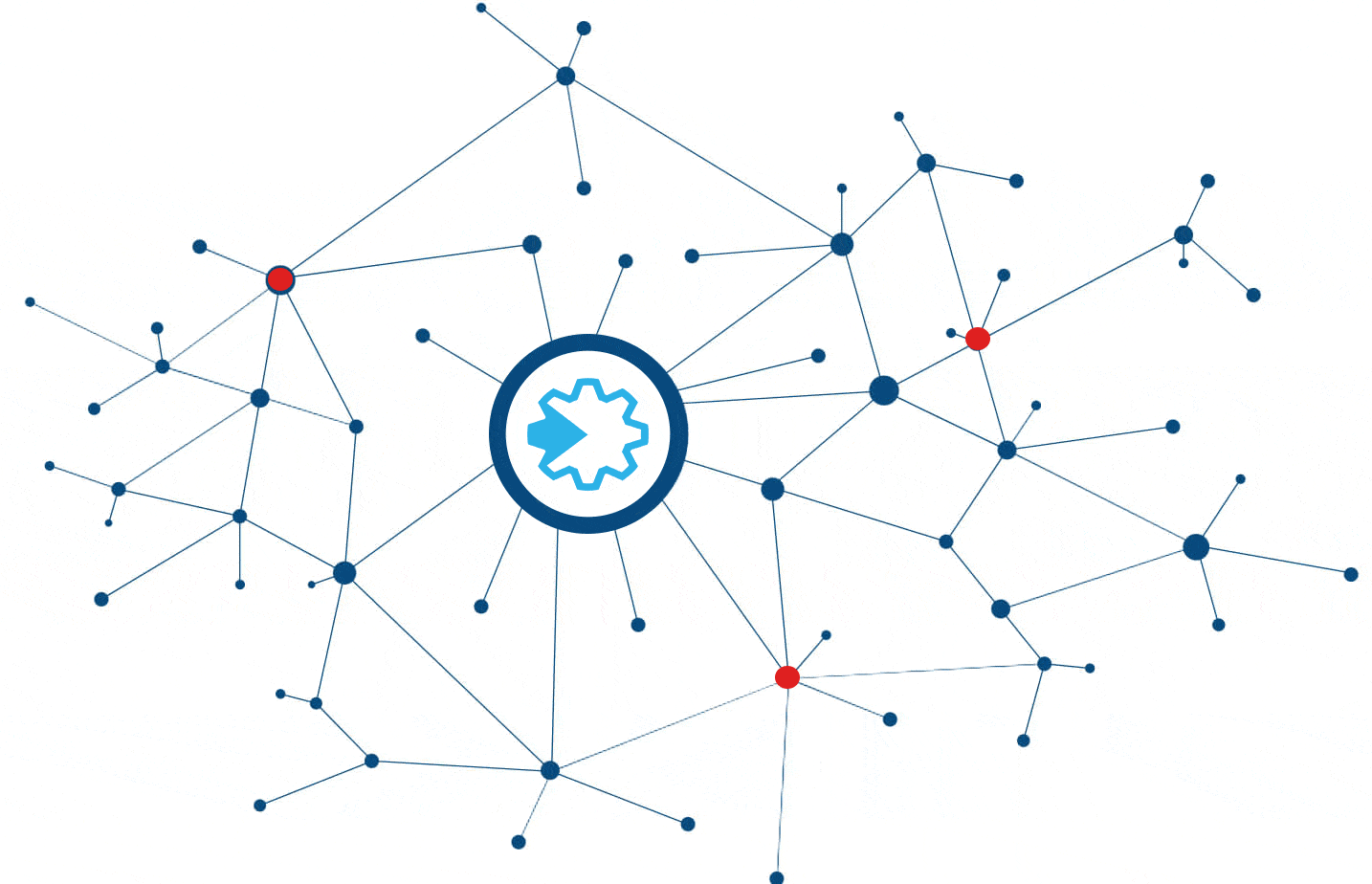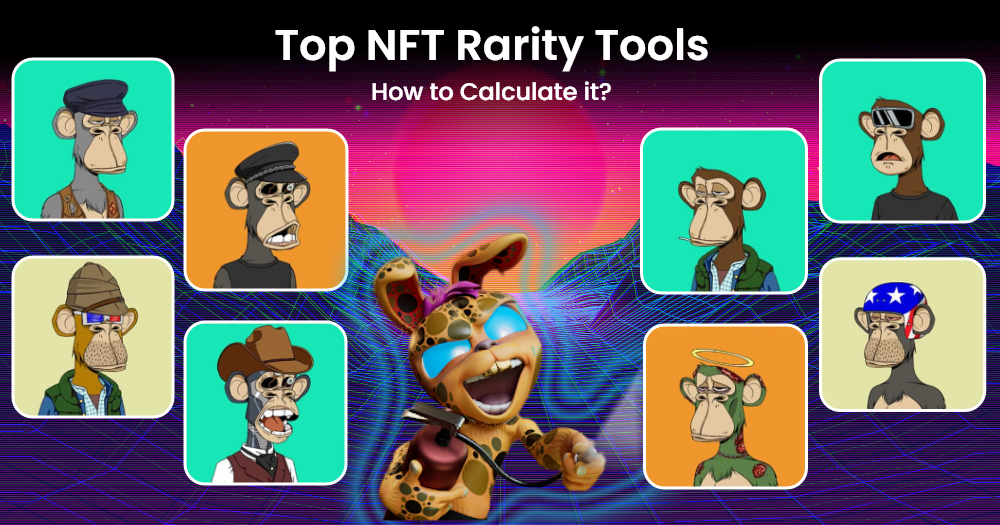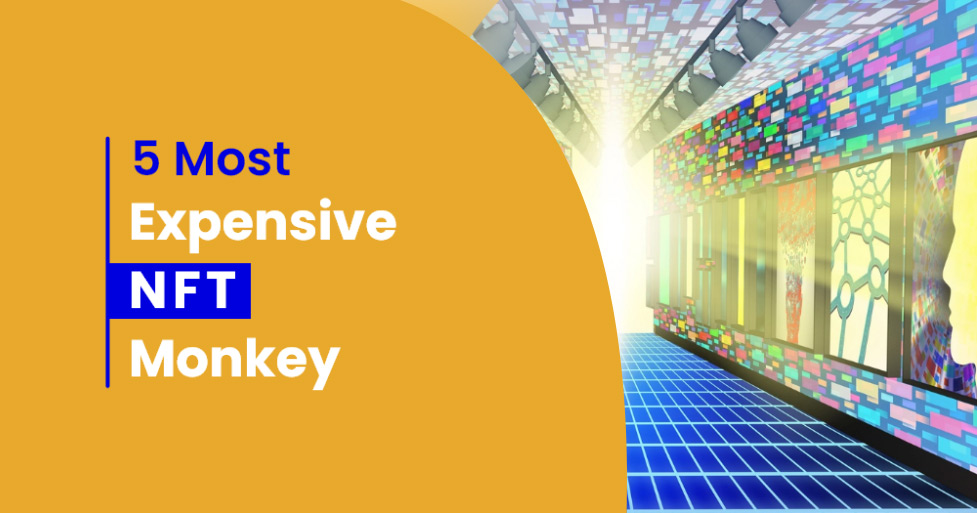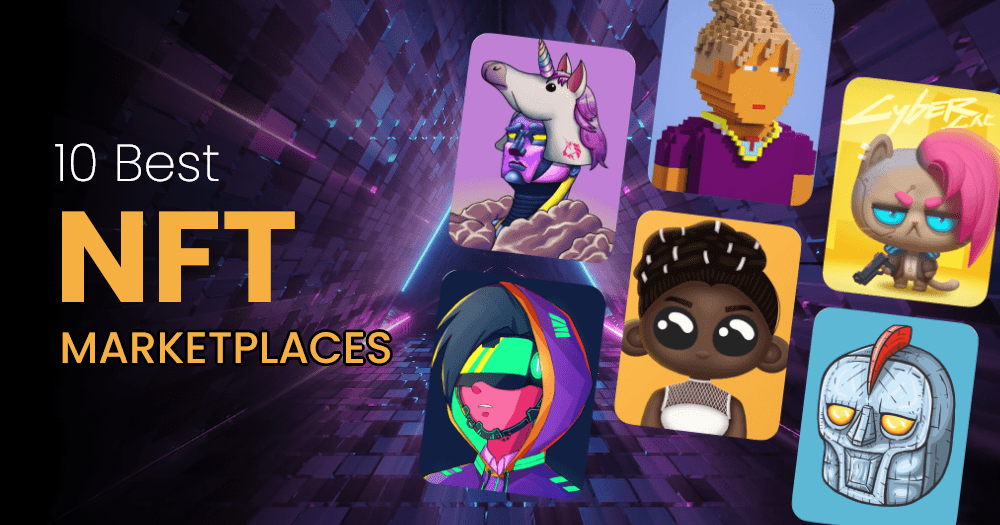Like any other technology, Blockchain, a distributed ledger technology, has been on a consistent mode of evolution to become more feasible and mainstream. Santoshi Nakamoto (or a group of tech enthusiasts) was built in 2008 as a system for recording peer-to-peer information about the first cryptocurrency; Bitcoin.
Currently, blockchain is an advanced technology that powers a decentralized ecosystem for building decentralized applications and futuristic blockchain-powered solutions. Second and third-generation blockchains like Ethereum and Polkadot are gaining huge traction with their ability to facilitate the development of innovative dApps, cross-chain applications, and customized solutions that align with the expectation of today’s progressive enterprises.
In this regard, let’s understand the core concept of blockchain technology, including the meaning, structure, blockchain features, tools, and technologies. Here you can find some best blockchain business ideas.
What is Blockchain Technology?
Blockchain is a distributed, immutable ledger technology that records transactions and tracks digital assets across a decentralized network. Businesses can utilize the open-source and shared ledger of blockchain to virtually track and trade anything, including a range of tangible and intangible assets, and digital currencies without any risks and high costs. At its core, blockchain is a growing list of records, technically called blocks that are interconnected using cryptographic technology.
Blockchain’s Structure Explained
Being decentralized, distributed and open ledger consisting of blocks that record data and transactions across a peer-to-peer ecosystem where modification or alteration in the information cannot be done through any participant. Authentication of the time-stamped records in the blockchain is the responsibility of mass node (huge network of computers) collaboration. Decoding the blockchain’s structure, the blockchain consists of five significant layers as the following:
1. Hardware or Infrastructure Layer
The infrastructure layer in the blockchain consists of data servers that reliably and securely back up the data in the blocks. Whenever users surf the decentralized or interact with a blockchain ecosystem using dApps, their computer searches and abstracts data from the servers allocated within the infrastructure layer.
2. Network Layer
Blockchain’s peer-to-peer framework enables diverse nodes to share and communicate transitions to reach a final agreement and ensure transactions’ accuracy. This ‘inter-node communication in the blockchain is facilitated through the network layer.
3. Consensus Layer
For blockchain platforms to function, the consensus layer is necessary. Whether it’s an Ethereum, Hyperledger, or other blockchains, the consensus layer is the most important and required. The blocks are ordered, validated, and guaranteed to be in the correct sequence by the consensus layer.
4. Data Layer
The data layer serves as both the physical storage and the blockchain data structure. Blocks are assembled into a linked list, sometimes known as Merkel trees, and then asymmetrically encrypted. Blocks, Merkle trees and transactions are the main elements that make up the data layer in the blockchain.
5. Application Layer
Blockchain’s application layer consists of Chaincode and decentralized applications. However, the application layer is further divided into sub-application and execution layers. The software that end users use to interact with the blockchain network is included in the application layer. It includes user interfaces, frameworks, application programming interfaces (APIs), and scripts.
History of Blockchain Technology
David Chaum first proposed the idea of a blockchain-like protocol in 1982. He coined the blockchain term as a “computer-based system established, maintained and mutually trusted by groups. Later in the year 1991, Stuart Haber and W.Scott Stornetta brought the concept of a chain of blocks. Both of them had the vision to implement a system that can timestamp immutable records.
In 1992, Dave Bayer, Haber and Stornetta incorporated Merkle trees into the existing design of blockchain to enhance its efficiency as a decentralized ledger technology. Finally, in 2008, Satoshi Nakamoto conceptualized and developed the world’s first blockchain to support digital currency; Bitcoin. Since that time, blockchain and crypto enthusiasts have been experimenting with blockchain technology to build more advantageous and advanced blockchain protocols.
What are the Features of Blockchain?
1. Immutable
“Immutability” is among the blockchain’s top features that eliminate the challenges related to data manipulation and corruption. In simple words, immutable means something cannot be tampered with or changed. With the immutable attribute, blockchain ensures that data once entered into its ledger cannot be modified, which makes blockchain an unalterable and permanent network ecosystem.
To achieve immutability and temper-proof features, blockchain adopts a slightly different working system than the traditional business ecosystem that relies on a range of centralized authorities for authentication of transactions before recording into the final ledger.
2. Decentralized
Blockchain is truly decentralized. Meaning that blockchain exists on a peer-to-peer distributed ecosystem that is neither controlled by any centralized governing authority nor an individual appointed to control the ecosystem. Instead, a huge network of computers (nodes) scattered worldwide collectively govern the blockchain network.
These nodes have the authority to review the documents, data and transactions stored on the blockchain’s ledger. With no central authority, blockchain enables users to directly access their files or data from the ledger whenever required.
3. Highly Secured
As blockchain does not require a centralized authority to handle the transactions and other activities associated with the organization. When there are no middlemen involved, the chances of fraud and record manipulation become close to zero. In this way, blockchain ensures high security.
What are the Different Types of Blockchain Technology?
1. Public Blockchain
Public blockchain represents a non-restrictive and open blockchain ecosystem where any user with access to the internet can enter and become a node. Once users become authorized nodes, they can access the blockchain’s current records along with the eligibility to engage in mining activities.
2. Private Blockchain
Private blockchains have a restricted environment where a central authority sits to control network-related compliance and the way users operate the network. While private blockchains utilize the same mechanism as public blockchains; a truly decentralized peer-to-peer technology, private blockchains have a smaller scale compared to the public blockchain. These types of blockchains typically exist inside an organization or company that avoid easy entry of anyone into the network.
3. Hybrid Blockchain
Hybrid blockchain is a unique blockchain technology that comprises both private and public blockchain attributes. Data, transactions and information stored in the hybrid blockchain’s ecosystem are kept private but these transactions are publicly verifiable whenever necessary.
4. Consortium Blockchain
The consortium is the fourth popular type of blockchain, generally called a federated blockchain. It has similar features as hybrid blockchain but it stands out in terms of allowing access to a particular group or organizational members. Simply put, Consortium blockchains are private blockchain but it extends limited access to specific group or organizations. Thereby, this form of blockchain eliminates the chances of risk that can occur in the public blockchain.
How Does Blockchain Work?
Blockchain facilitates data to be recorded across an immutable distributed ledger, eliminating any edit. Hence, blockchain is a foundation for a safe, secure, and decentralized ledger ecosystem where data cannot be altered, destroyed or deleted. For this reason, blockchain is widely known as distributed ledger technology. The below image explains the working mechanism of blockchain simply that anyone can understand.
Why is Blockchain Important?
Blockchain is important because it has the potential to disrupt the existing and traditional business infrastructures by replacing the centralized business infrastructure with a highly transparent and decentralized blockchain ecosystem.
1. Automated
Blockchain technology is designed to drive automation across business workflows. With self-executing smart contracts, blockchain and blockchain-powered solutions eliminate the need for manual operations or any third-party authorities to enforce contracts, review rulesets, perform background checks, etc. Blockchain further supports an automated verification of the machine itself, allowing the machines to exchange value and introduce decisions as required.
2. Consensus
A consensus algorithm is a decision-making component in a blockchain that helps a blockchain network to stand out. A precise consensus algorithm is essential for a blockchain to manage and validate millions of nodes, allowing them to come to an agreement and contribute to the network’s robustness. Talking about the blockchain’s architecture, the consensus mechanism remains at its core, allowing the whole ecosystem to make wiser decisions in terms of how the nodes will validate the transactions, the parameters through which validators are selected and other network-related decisions.
3. Faster Settlement
Business processes like transaction settlement, data processing and contract execution in a centralized system are time-consuming. In some cases, a single transaction can take days to process, which raises the chance of corruption and manipulation of the information. Compared to a centralized system, blockchain offers faster transaction settlement while ensuring high security.
Using blockchain, banking systems can also be faster and more reliable. For example, people residing abroad have the ease of quickly and safely sending money to their families without the involvement of third-party authorities such as banks. Such faster settlement in the blockchain is possible due to smart contracts that are automatically executed once the rules encoded in the contract are met.
Is Blockchain Technology Secure?
Blockchain may not be completely immune to hacking, but its decentralized nature protects the ecosystem against hacking and similar activities that can affect security.
Say, for example, the largest blockchain platforms- Bitcoin and Ethereum are open to worldwide participants. Anyone can join the network and become a participant (node). However, the increasing nodes contribute to enhancing security instead of creating security-related vulnerabilities. In a nutshell, blockchain is secure.
Pros of Blockchain
1. Decentralized
One of the main advantages of blockchain technology is that blockchain does not need any third party to handle transactions. Organizations or individuals using blockchain are confident that no middlemen can manipulate the transactions, access the data, or perform activities that violate security and integrity.
2. High Data Security
As a distributed network protected by cryptography, blockchain technology is highly secured compared to centralized systems. Blockchain eliminates the tempering of any data, securing the data against potential hackers. Any attempt at data modification will immediately reflect on the node’s computers since copies and digital signatures are automatically checked against each other for complete transparency and accuracy.
3. Lower Operational Cost
Transactions in the blockchain occur across a peer-to-peer network without any third party with no dependency on any centralized authority or servers. Hence, organizations using blockchain leverage reduced operational costs.
4. No Single Point of Failure
A centralized system may allow the hackers to gain access to a business database or server and those hackers can do major damage to the data and information available there. With blockchain, there’s no room for a single point of failure because the network is distributed and users can create passwords of up to 100 characters long, which are impossible to break.
5. Transparency and Immutability
Blockchain records transactions across a distributed public ledger that nodes can view and authenticate the data without identifying the data’s owner. With the traditional banking system, transparency cannot be enabled because the centralized authority (banks or institutions) do not allow review of the transactions or the bank’s processing.
6. Better Accessibility
With no centralized authority controlling the network, blockchain makes a way for easy entry to the people. Anyone with a rigid internet connection and basic knowledge about becoming a node can access the blockchain ecosystem and start adding blocks (containing data) to the chain.
7. User-governed Network
Advanced blockchain platforms like Polkadot nowadays implement decentralized autonomous organization (DAO) into their ecosystem to improve the traditional mode of management in an organization. Instead of following the commands from a single entity, DAO enables an enterprise to give every member a voice through strict governance encoded into the smart contract, eliminating the hierarchy system from an organization.
8. Traceability
Industries like supply chains often struggle to have robust traceability in their supply chain management system, which leads to troubles like manipulation of data and improper product distribution across various channels. By migrating to the blockchain ecosystem, supply chains and similar industries can keep a track of each step involved in the process.
Cons of Blockchain
1. Scalability
Most second-generation blockchains cannot handle a higher amount of transactions per second, leading to poor scalability. That being said, blockchain is said to be poor in terms of scalability.
2. Energy Consuming
The energy blockchain consumes a high amount of energy for verifying transactions, arguably 0.3 percent of the world’s energy. With that, blockchain technology may be harmful to the environment.
3. Storage
Rather than relying on a centralized storage system, blockchain stores the whole database on the nodes of the network which may create issues with storage when the network has to handle a large number of transactions.
4. Immurarity
Although blockchain is growing at a fast pace, this technology is still under development. With multiple iterations, blockchain will undergo several changeovers, and hence industries are preparing themselves to align with the transformations for reaping the benefits of blockchain.
What are the Advantages of Blockchain for Businesses?
Blockchain has the potential to drive transformation in businesses, helping them revamp their existing business ecosystem and shift to a more result-driven infrastructure. Following are the main advantages of blockchain that a business can leverage to remain consistent in this competitive world:
1. Decentralized Organizational Structure
The decentralized nature of blockchain in an organization avoids a single point of failure since it requires the intervention of intermediaries. Also, blockchain promotes trust in an organization since a single participant is not accountable for data security.
2. Cost-Cutting Measures
Blockchain technology also helps organizations save money as it has the potential to disrupt the cost-consuming business infrastructure. The distributed and powerful ledger of blockchain handles transactions more quickly and efficiently, reducing the impact of manual tasks such as time-taking approaches and chances of errors.
3. Speed and Consistency
Transactions on the blockchain are recorded in a distributed immutable ledger so that data cannot be modified or altered. Secure and organized data is easy to keep as a record and audit for data and security compliance.
Real-World Blockchain Use Cases And Applications
1. Blockchain in the Supply Chain
The global supply chain system is quite ineffective and improperly monitored. Blockchain offers accurate asset tracking, improved service, product, and software licensing, and transparency into the provenance of consumer goods to make the supply chain system more productive and profit-driven for organizations.
2. Digital Identity
For businesses, users, and IoT management systems, a blockchain-based digital identity solution offers a uniform, interoperable, and tamper-proof infrastructure. Powered with digital identity, blockchain-based self-sovereign identity solutions give people more control over their data while preventing data and identity theft.
3. Finance- Defi and Fintech
Fintech companies face challenges such as outdated operational procedures, sluggish payment settlements, a lack of transparency, and security flaws. Blockchain improves the effective digitization of financial instruments, which decreases the cost of capital, lowers counterparty risk, and increases liquidity.
4. Healthcare and Lifesciences
Healthcare applications built on blockchain makes tracking medical supplies and managing medical data easier, faster, and more secure. Blockchain-based mechanisms also enhance patient care, speed up the development of medical discoveries, and guarantee the integrity of medicines sold on international markets.
5. Law & Government
By offering accessibility, transparency, cost savings, speed, efficiency, and data integrity, an institutional-grade blockchain solution can solve the substantial loss in total productivity that manual procedures cost a law firm every year.
6. Real -estate
Blockchain protocol like Ethereum is responsible for the digitization of assets and financial instruments. As a result, fractional ownership, access to international markets, liquidity, and access to real estate investment opportunities have been improved since the advent of Ethereum.
7. The Fashion Industry and Retail
With consumer needs, the retail fashion and luxury market moves quickly. By strengthening supply chain operations, lowering the danger of fake goods and grey markets, and improving data management tools, blockchain has the potential to address long-standing industry concerns.
8. Insurance
Insurance sectors and their processes are vulnerable to fraud. Moreover, insurance claim and its evaluations can take a very long time. Blockchain has the potential to drastically speed up processing times by securely streamlining data verification, claims to process, and disbursement.
What is the Difference Between Blockchain and Cryptocurrency?
| Aspect of comparison | Blockchain | Cryptocurrency |
|---|---|---|
| Nature | A technology that powers distributed ledger to record immutable transactions. | A digital currency based on blockchain to support virtual exchanges. |
| Use cases | Recording digital transactions. | Making payments digitally across diverse industries. |
| Value | Have real or monetary value. | Does not have any real or monetary value. |
| Mobility | Can be easily transferred | Cannot be transferred |
| Examples | Polkadot
Avalanche Ethereum, etc |
BTC
ETH (Ethereum) |
Top Blockchain Companies in the USA
Since blockchain is a fast-growing industry, many companies have started to offer blockchain-related services. Following are the top-performing company in the USA:
1. The NineHertz
With 300+ highly skilled IT professionals, The NineHertz is a one of top blockchain development companies that offers cost-effective solutions to SMEs all over the world. As a premier partner of NASSCOM and STPI, NineHertz has more than 1500 clients across various sectors. The company is rapidly becoming a giant in web3 and metaverse development and its team knows how to roll out cutting-edge applications and solutions that are effective and secure.
2. ScienceSoft
ScienceSoft, a popular end-to-end blockchain development company, has 700+ specialists on staff and 33 years of IT experience. The business creates and develops blockchain systems of varying complexity that guarantee complete traceability, security, quick data processing, and high ROI.
3. Ripple Labs Inc.
The Ripple protocol and exchange platform were created by this American fintech startup, which was started by Brad Garlinghouse in 2012, and they offer cross-border payment solutions using blockchain technology. The decentralized technology of Ripple provides a seamless cross-border payment processing experience.
4. LeewayHertz
LeewayHertz is a Leading software development company with expertise in custom digital solutions to businesses and startups. The company, with their team of 250+ full-stack engineers, designers, and innovators has successfully built and delivered 100+ digital solutions for diverse industries.
5. Blockchangers
This Norwegian organization was established in 2015 to help consumers in understanding and utilizing blockchain technology. Blockchangers collaborate with both public and private entities to define the future of blockchain as they work to promote it.
Most Used Blockchain Tools
Blockchain is a fast-growing technology, which continues to evolve with time. Therefore, tools and technology used for blockchain development also evolve to become more feasible. Below are some of the most used blockchain tools that you must know.
- Geth
- Solidity
- Metamask
- Truffle
- Mist
- Solc
- Remix
- Ganache
- Blockchain testnets
- Oracles
FAQs on Blockchain
1. Who Invented Blockchain?
Satoshi Nakamoto invented the original form of blockchain as a distributed ledger to power the first cryptocurrency, Bitcoin.
2. What’s the Difference Between a Private Blockchain and a Public Blockchain?
A private blockchain is based on a centralized network where an administrator manages the network and all participants must submit consent before joining the network.
A public blockchain is an open, decentralized, and peer-to-peer network-based ecosystem with direct access to worldwide participants and it cannot be controlled by a centralized authority.
3. What is a Blockchain Platform?
A blockchain platform can be a dApp or a decentralized solution built on the blockchain ecosystem that enables users to engage anonymously without the need for any centralized authority.
4. What’s the Future of Blockchain?
Blockchain is progressing at a fast pace, which indicates huge growth in its ecosystem in the coming time. By 2022, most businesses have an innovative blockchain-powered business solution estimated worth $10 billion. Moreover, the industry value of blockchain will reach $360 billion by 2026.
5. Can Blockchain be Hacked?
Blockchain is impossible to hack since it adopts a decentralized architecture. However, blockchain may encounter a 51% attack that occurs when an individual or a group of people undertake more than 50% hashing power of a blockchain’s network.
6. How will Blockchain Change the World?
Blockchain has the potential to decentralize the existing ecosystem of industries like Defi, gaming and NFTs with a set of technologies such as digital property, consumerism, security, digital wallets and key.
7. Is Blockchain Bad for the Environment?
The computing resources of blockchain and the energy needed for the mining process can impact the environment. However, advanced blockchain networks nowadays consumes minor resources, eliminating the bad impact on the environment.
8. Is Blockchain Wallet Safe?
Yes, a blockchain wallet or decentralized web3 wallet is completely safe as the transactions in the wallet are cryptographically signed.
9. When did Blockchain Start?
The concept of blockchain initially existed with the world’s first cryptocurrency; Bitcoin. With multiple iterations, blockchain is now a broad concept that powers the development of various dApps and decentralized solutions.
10. Is Blockchain Cryptocurrency?
No, blockchain is a technology that supports the existence and management of cryptocurrency.
11. Which Blockchain is the Best?
Every blockchain is best depending on the enterprise-specific needs. At present, advanced blockchain platforms like Polkadot, Cardano and Avalanche are high in demand.
12. Is Blockchain a Database?
The immutable ledger, or blockchain, which was first introduced in 2009, is an electronic database that stores crucial data including records and ledger entries.
13. How Does Blockchain Technology Work?
Blockchain exists and runs on a peer-to-peer ledger ecosystem powered by a unique consensus model, native tokens and various attributes.
14. Does Blockchain Accept Credit Cards?
Yes, you can currently buy cryptos and invest in blockchain-based assets using credit cards.
15. Why is Blockchain Secure?
Being decentralized and with no involvement of intermediaries, blockchain is secure against hackers.
16. What is the Biggest Blockchain Company?
IBM is considered the biggest leader in the blockchain industry and offers cognitive decentralized solutions and custom blockchains for enterprises.
17. Can I Invest in Blockchain?
Yes, you can buy the stocks of blockchain companies and also stake your crypto holdings to earn rewards.
Great Together!










